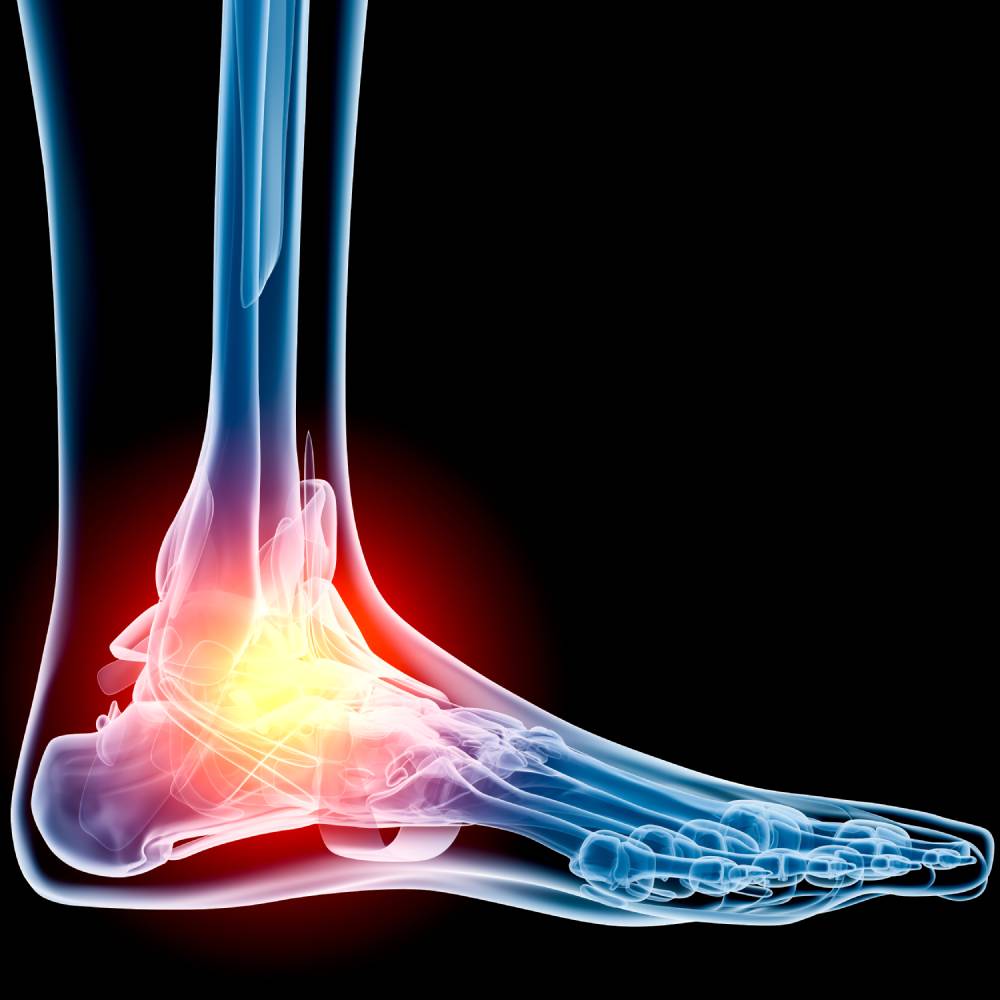Just as there are various ankle conditions that warrant surgery —including, but not limited to, tendonitis, fracture, and arthritis— there are several types of ankle surgery [1]. These different operations vary in technique, type of anesthesia required, and level of invasion [1].
Ankle Arthroscopy
Ankle arthroscopy is a minimally invasive procedure used to treat ankle injuries and infective arthritis [1, 2]. The surgeon inserts an arthroscope into the ankle, allowing him/her to identify the ankle’s issues and insert other tools to repair it, all while only making slight incisions through the skin [3]. The procedure tends to be short (around an hour) and can be performed under regional or general anesthesia [3].
Ankle Fracture Surgery
Ankle fracture surgery treats broken ankles [1]. There are several types of ankle fracture surgery; the most common form of ankle fracture surgery is open reduction and internal fixation (ORIF), which involves the surgeon exposing the bone and repositioning the patient’s bone pieces into their proper alignment [4]. After realigning the bone pieces, the surgeon secures them to one another using metal plates, wires, or other tools [4]. This procedure requires general anesthesia [4].
Ankle Fusion
To treat arthritis, surgeons may opt for ankle fusion [1]. During this procedure, the surgeon removes the cartilage at the ends of damaged bones and then joins the bones together using screws and metal plates [5]. Throughout this process, the patient is sedated by general or spinal anesthesia [6]. While ankle fusion is often successful at alleviating arthritis-related pain, it can also restrict the ankle’s motion [5]. It is one of the more invasive types of ankle surgery.
Ankle Replacement
Ankle replacement involves eliminating the ends of injured bones and then placing an artificial replacement joint over them [5]. With this plastic-and-metal joint in place, patients can perform more natural movements [5]. This procedure warrants general anesthesia [7]. It is appropriate for patients who suffer from severe arthritis [7].
Lateral Ankle Ligament Reconstruction
Lateral ankle ligament reconstruction, also known as the Brostrom procedure, involves the surgeon tightening and possibly shortening ligaments on the outside of the ankle [8]. Because it only requires the surgeon to make a tiny incision, the Brostrom procedure can be performed as an outpatient procedure [8]. Although it can be performed with regional anesthesia, the surgeon may also opt for general anesthesia [8].
Tendon Surgery
Tendon surgery varies in severity, depending on the type of tendon injury it seeks to relieve [1]. While patients with chronic synovitis or tendonitis can receive relief via a simple tear repair or diseased tissue removal, others may require more complex procedures such as tendon transfer or Achilles repair and reconstruction [1]. Accordingly, the appropriate mode of anesthesia varies, with local anesthesia, spinal anesthesia, nerve blocks, and general anesthesia being appropriate in different instances [9, 10].
Conclusion
Owing to the diverse types of ankle surgery, patient recovery times vary [1]. However, most patients will have to use crutches and then transition to wearing a walking boot or cast at some point in their recovery process [1]. Whether patients regain normal function following surgery depends on several factors, including the original injury, the procedure used, and its success.
References
[1] Cleveland Clinic, “Ankle Surgery,” Updated February 11, 2020. [Online]. Available: https://my.clevelandclinic.org/health/treatments/21047-ankle-surgery.
[2] M. Singh Dhillon, A. Hooda, and P. Kumar, “History of foot and ankle arthroscopy,” Foot and Ankle Review, vol. 1, no. 1, pp. 126-32, July 2020. [Online]. Available: https://doi.org/10.25259/JASSM_4_2020.
[3] Cleveland Clinic, “Ankle Arthroscopy,” Updated July 29, 2022. [Online]. Available: https://my.clevelandclinic.org/health/treatments/23977-ankle-arthroscopy.
[4] Johns Hopkins Medicine, “Ankle Fracture Open Reduction and Internal Fixation.” [Online]. Available: https://www.hopkinsmedicine.org/health/treatment-tests-and-therapies/ankle-fracture-open-reduction-and-internal-fixation.
[5] Mayo Clinic, “Ankle Surgery,” Updated May 17, 2022. [Online]. Available: https://www.mayoclinic.org/tests-procedures/ankle-surgery/about/pac-20385132.
[6] Johns Hopkins Medicine, “Ankle Fusion.” [Online]. Available: https://www.hopkinsmedicine.org/health/treatment-tests-and-therapies/ankle-fusion.
[7] Mount Sinai, “Ankle Replacement.” [Online]. Available: https://www.mountsinai.org/health-library/surgery/ankle-replacement.
[8] Johns Hopkins Medicine, “Lateral Ankle Ligament Reconstruction.” [Online]. Available: https://www.hopkinsmedicine.org/health/treatment-tests-and-therapies/lateral-ankle-ligament-reconstruction.
[9] Y. Lu et al., “Corrective Tendon Repair with Local Anesthesia following Wrist-level Replantation,” Plastic and Reconstructive Surgery – Global Open, vol. 10, no. 3, p. e4218, March 2022. [Online]. Available: https://doi.org/10.1097/GOX.0000000000004218.
[10] J. Cluett, “Achilles Tendon Surgery: Everything You Need to Know,” VeryWell Health, Updated August 27, 2022. [Online]. Available: https://www.verywellhealth.com/treatment-of-torn-achilles-tendon-2549424.
